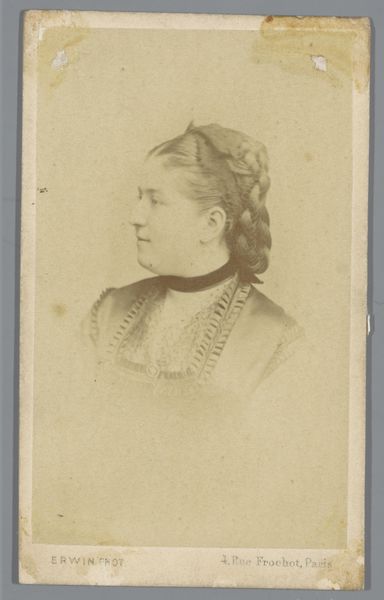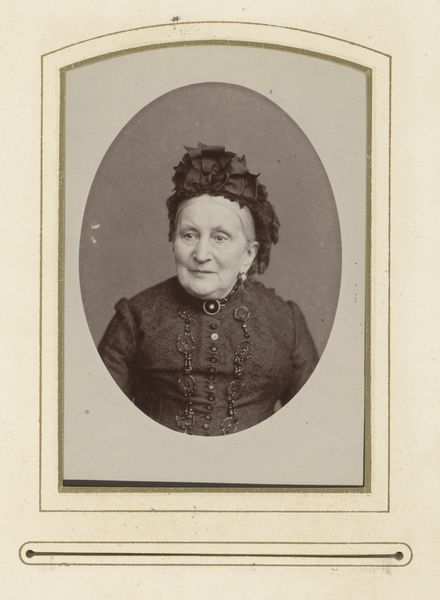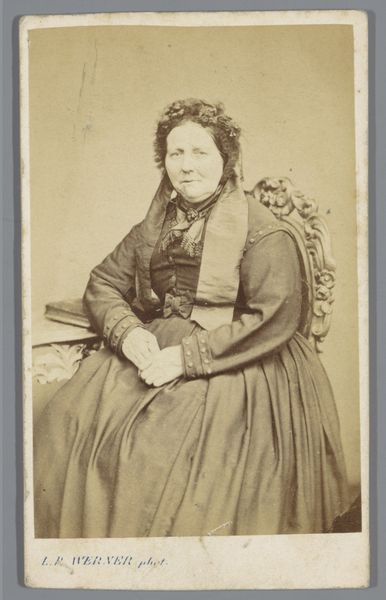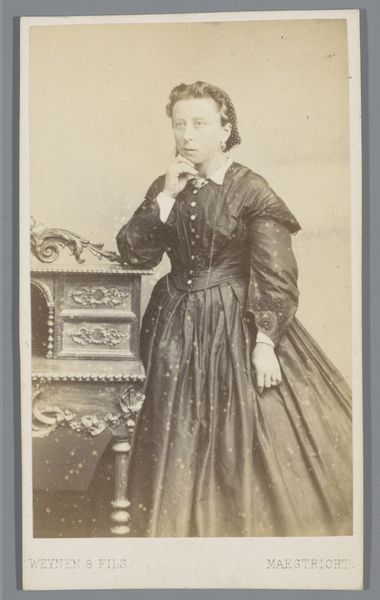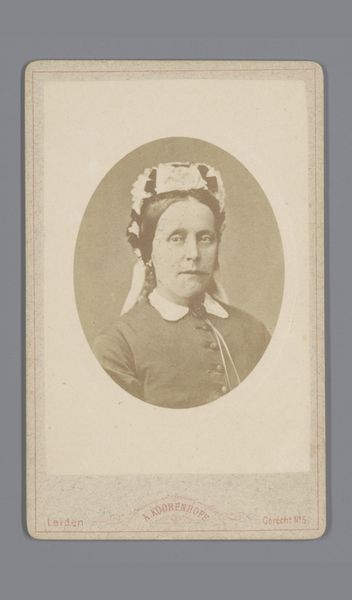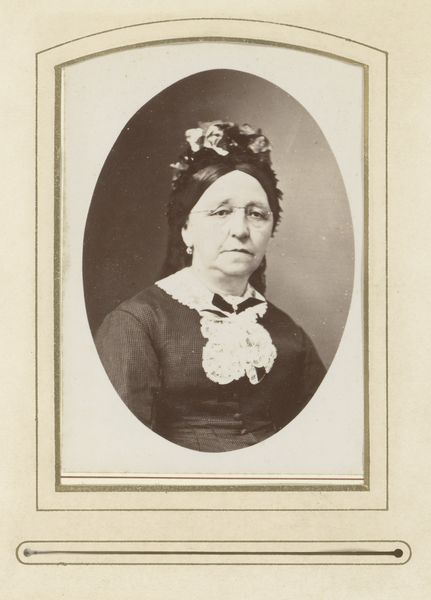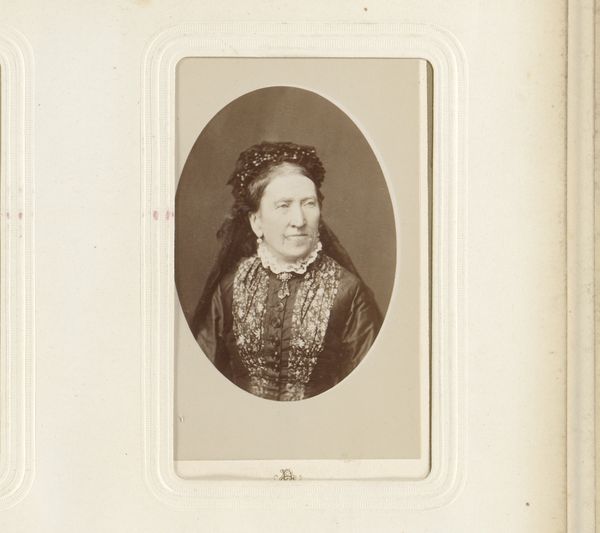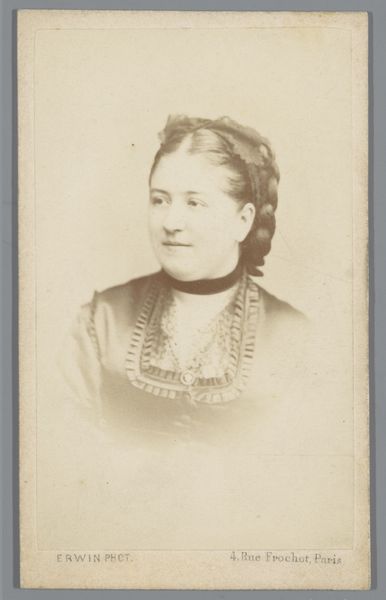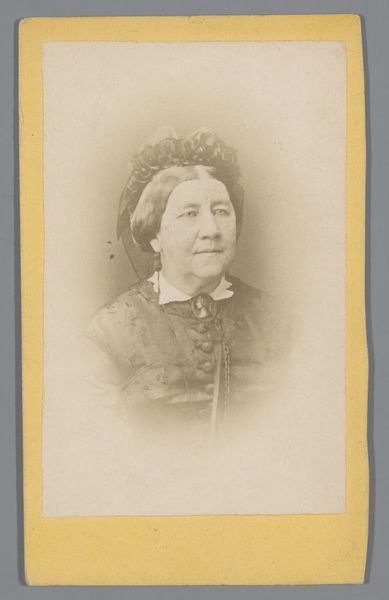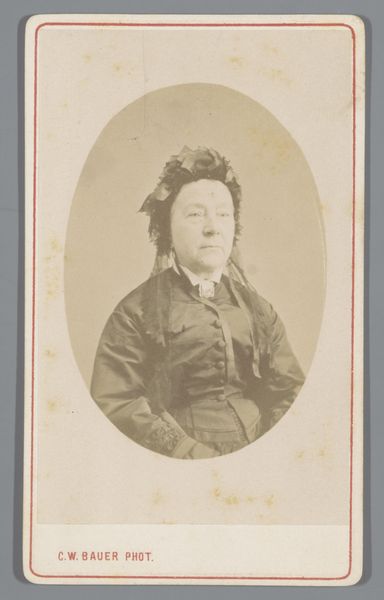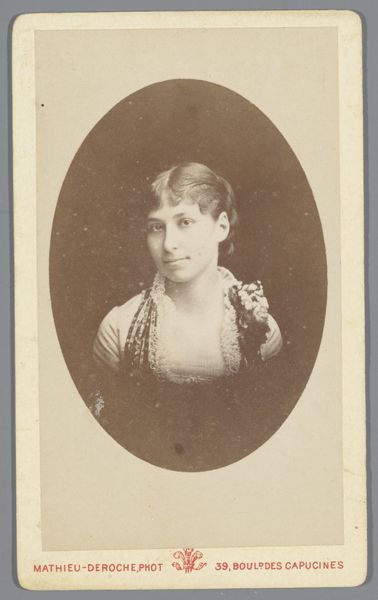
photography, gelatin-silver-print
#
portrait
#
photography
#
gelatin-silver-print
Dimensions: height 105 mm, width 63 mm
Copyright: Rijks Museum: Open Domain
Editor: Here we have Erwin Hanfstaengl's portrait, "Portret van een onbekende vrouw, aangeduid als Madame Papin", made sometime between 1855 and 1885 using the gelatin-silver print technique. It's interesting how this formal photographic portrait aims to capture an individual. What do you find particularly striking about this photograph? Curator: It’s intriguing to consider the context surrounding portrait photography at this time. Photography democratized portraiture, shifting it from the exclusive realm of the wealthy who could commission paintings to something accessible to a wider social class. The sitter’s attire – her bonnet, the lace, and the ribbon – speaks to a certain social standing, while the availability of photography points to a burgeoning middle class eager to participate in visual culture. This photograph isn't merely a likeness; it’s a carefully constructed performance of identity, intended for public viewing within specific social circles. Editor: Performance, that's an interesting angle. Was there an established visual language for portrait photography at this point? Curator: Precisely! The way sitters posed, the backgrounds chosen, the lighting employed – these were all part of a visual language that communicated social status and cultural values. Think about the power dynamic inherent in the act of sitting for a photograph. Who had access to the means of production? Whose image was deemed worthy of preservation and dissemination? What story is the photograph trying to tell and for whom? Editor: It makes me think about the democratizing force of photography, yet framed by societal norms. Curator: Exactly. Early photography both challenged and reinforced social hierarchies, creating a complex dialogue between art, technology, and social status. Considering this work within the history of photography opens a deeper conversation about its role in constructing public memory and individual identity. Editor: I see how considering these photos in their historical context gives me a fuller picture of the world that shaped them. Thank you! Curator: Indeed, and thinking critically about the power dynamics embedded within images allows us to see more clearly how those dynamics continue to shape our visual culture today.
Comments
No comments
Be the first to comment and join the conversation on the ultimate creative platform.

